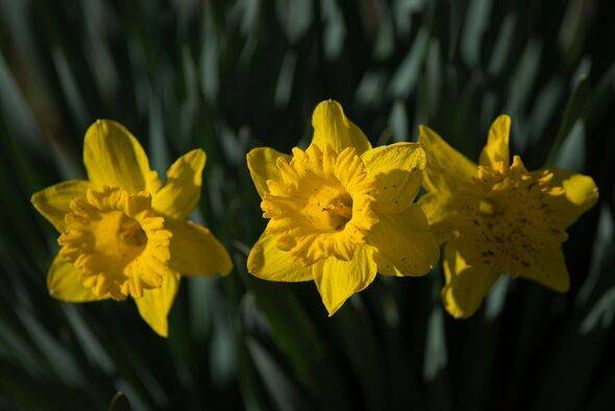Moles can be a real nuisance in the garden, but there are a few natural ways to deter them. One expert has shared the best plants to keep them away, including one you can plant in November
13:58, 11 Nov 2025Updated 09:03, 22 Nov 2025
 There’s a simple way to keep moles away (stock image)(Image: 4FR via Getty Images)
There’s a simple way to keep moles away (stock image)(Image: 4FR via Getty Images)
Moles can be a real nuisance in gardens, causing chaos by digging holes and ruining lawns. They are most active during the early morning and late evening, particularly in spring and autumn when the soil is moist and easy to dig.
These critters are busy all year round as they don’t hibernate, but their presence is more noticeable during certain times of the year. If you find them frequently in your garden and they’re causing problems, there’s a simple step you can take to discourage them from visiting.
There are natural ways to deter them that won’t cause them any harm. In fact, there are several methods you can use to keep them away from your grass and plants.
David Fryer, an expert at Mr Fothergill’s, has offered some invaluable advice. With over 30,000 followers on Instagram, the brand has been inspiring gardeners since 1978, so he’s definitely someone worth paying attention to.
David said: “Another furry pest you seldom see until the morning when you find fresh mounds of soil in your lawn and borders is moles. They don’t harm your plants directly, but they do disturb the roots and cause patches of grass to die as they burrow in the soil for worms and grubs.
“Some garden plants can help. Try euphorbia lathyris (caper spurge), daffodils and alliums, as moles detest the smell.”
 Daffodils can help keep moles away (stock image)(Image: Getty)
Daffodils can help keep moles away (stock image)(Image: Getty)
Whilst there are several blooms they detest, there’s one particular variety you can get in the ground during November to help ward them off. November is regarded as the final month of the year for planting daffodils before conditions become too harsh.
Moles typically despise daffodils because the bulbs contain a poisonous compound called lycorine, which causes illness if consumed. This toxicity, combined with the chemical leaching into the earth, serves as a natural repellent.
Typically they will steer clear of spots where daffodils are growing. They also detest caper spurge, which is actually referred to as the “mole plant.”
It’s believed to repel moles because its poisonous and irritating sap renders the soil unpleasant to moles, or the plant’s root secretions drive them away. Nevertheless, there are varying theories about the caper spurge method.
Some gardening enthusiasts propose that its success might stem from the plant flourishing in drier earth where earthworms, a primary food source for moles, aren’t spotted that frequently. Consequently, it may differ in its effectiveness.
Furthermore, moles dislike alliums because the powerful aroma repels them and can render their tunnels uninhabitable. Growing alliums such as decorative onions, garlic and chives is a natural and successful method to discourage moles from your garden.
The plant emits a sharp smell, particularly when damaged, and this can overpower the mole’s sense of smell. It prompts them to relocate elsewhere quite rapidly.
Garden World explains: “There are a number of plants which are reputed to keep moles away. Daffodils and marigolds reputedly repel the animals.
“Daffodil bulbs are toxic, therefore moles probably avoid their roots. Marigolds are aromatic and contain natural pyrethrins, they therefore are likely to repel the soil dwelling bugs that moles feed upon.
“The caper spurge, euphorbia lathyris seeds freely producing a strange plant of architectural appearance. It is commonly known as mole plant because of its apparent ability to keep moles at bay.”


Comments are closed.